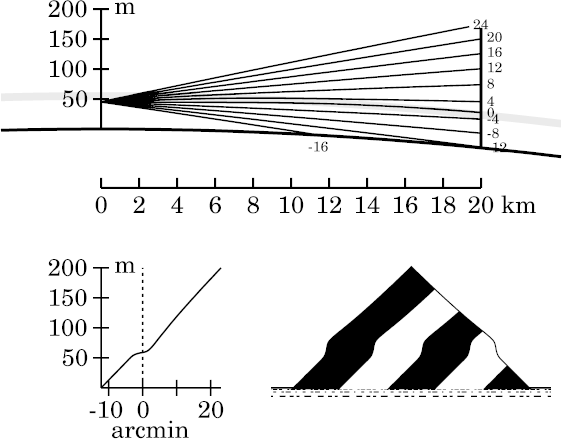
The one used here is a 2° thermal inversion between heights of 50 and 60 m, but with the corners at those two heights smoothed. That's the model used to make ray-trace diagrams on the mock-mirage page. It's also the model used to simulated a ducted sunset; that sunset page shows the actual temperature profile used here.
As usual, the inversion is represented by a shaded band in the ray diagrams; remember that the duct actually extends below this band.
This model produces a duct that extends down to about 45.7 m height — about a foot higher than the bottom of the duct for the zigzag model based on the same 2° temperature difference. (The two models differ only near 50 and 60 m, where the smooth model has the corners of the temperature profile rounded off; that rounding-off makes the duct a little thinner here than in the zigzag model.) As on the other pages that use this model, as well as the introductory mirage page, the inversion layer, between 50 and 60 m height, appears as a shaded band in the ray diagrams here.
So the smoothed duct is almost as thick as the zigzag one. The main features, therefore, are similar to the ones produced by the zigzag model; so you should read the detailed discussions of that model to understand the causes of those features. As you'd expect, the main effect of rounding the corners of the temperature profile is to smooth the corners in the mirages. But there are some other differences, particularly where rays are nearly horizontal at the edges of the inversion.
Once again, it's useful to see what happens as we move the observer up through the duct at two distances from the target. And, as for both Wegener's model and the zigzag model, I'll use 20 km and 40 km as the near and far target distances.

As in the zigzag model, the astronomical-horizon ray here is bent down continuously, instead of being refracted abruptly at Wegener's density discontinuity. But it ends up at about the same place on the target in all three models. At 45 m, we're just too far below the inversion to see the effects of its details.
Instructions for using the
[align]
links are found
here.
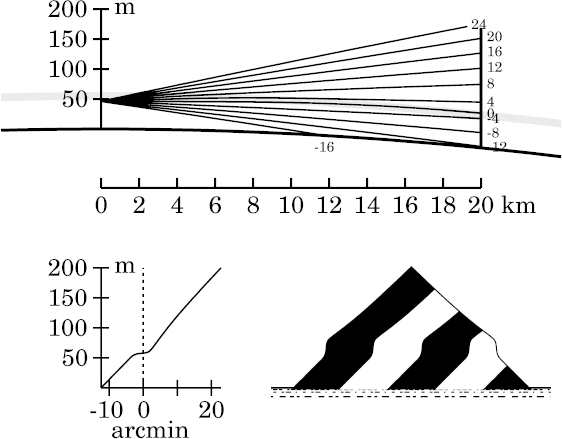
Although we're actually in the duct here, a target distance of 20 km is just too short to produce any miraging.
Furthermore, we're too far below the lower edge of the inversion to see
any effects from smoothing its edges. So let's jump up to an eye height
of 49 m, where some differences begin to appear.
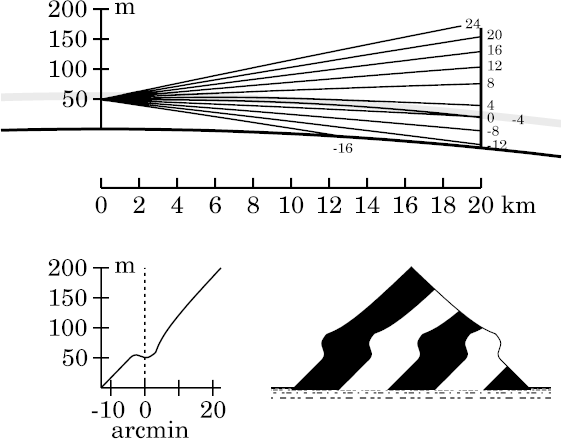
In the zigzag model, the discontinuity in lapse rate produced an angular corner near +3′ altitude. Here, that corner is rounded off. There's also a corner near the astronomical horizon; it, too, is smoother here.
Even though the observer is just a meter below the base of the thermal
inversion here, these rounded corners are the only visible effects of
smoothing the temperature profile.

The suppression of the corners, which marked the boundaries between image zones with different vertical magnifications in the zigzag case, now makes the interpretation of the miraged image more difficult.
Furthermore, the complex fine detail near the astronomical horizon
in the
zigzag-model image
has almost completely vanished.
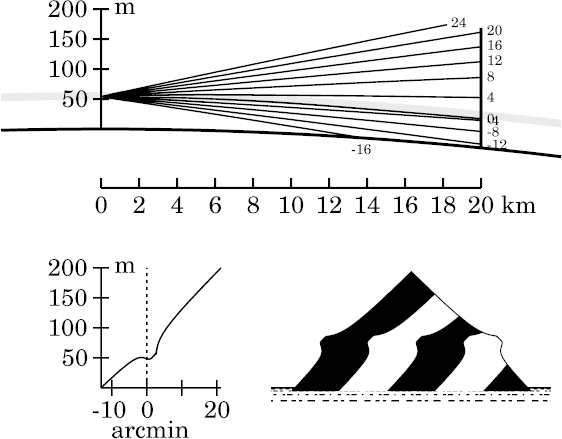
So this figure is fairly similar to the one for the
zigzag
model at the same geometry.
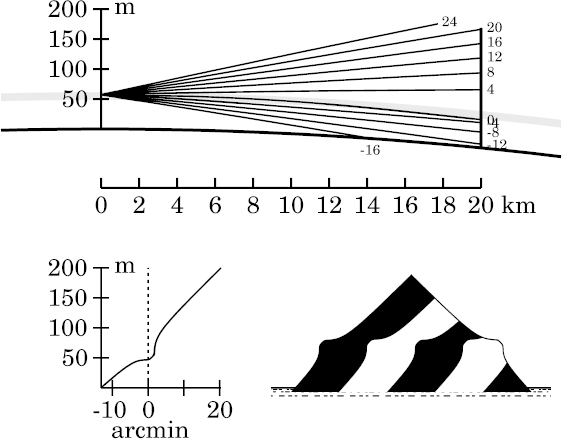
As in the zigzag model, the mirage has disappeared entirely at this short
target distance.
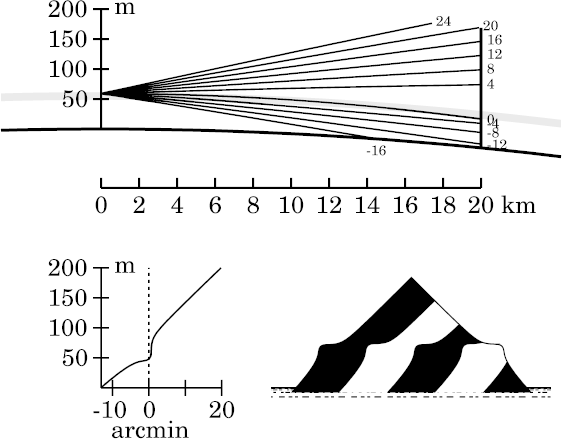
The real difference is that the vertical segment of the transfer curve
(which is the flat, stooped part of the simulated image) is appreciably
lower here — much closer to the astronomical horizon.
That's because rounding off the corner in the temperature profile has
moved the top of the duct down a fraction of a meter, so that it's nearly
at the eye height here.
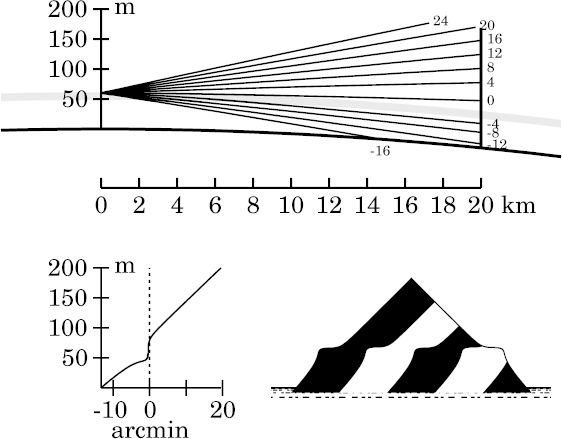
Here's a view of that situation, even though it technically should go on the ducted mock-mirage page. There's no simulation there for a target distance of 20 km, but you can interpolate between the ones at 15 km and 30 km to see what happens when the eye is 65 m high.
Notice that the vertical section of the transfer curve, and the
corresponding “platform” in the mirage image, falls almost
exactly at the astronomical horizon.
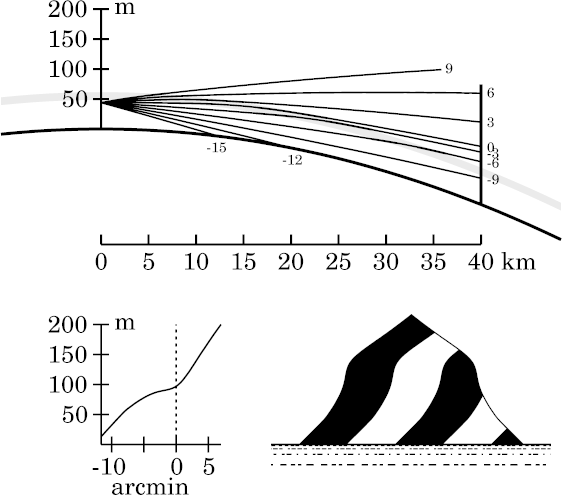
The lack of difference is hardly surprising.

There is a small difference: in the zigzag model, the contrast between the broad maximum in the transfer curve near −3′ altitude and the minimum near the astronomical horizon is a little bigger. That makes the mirage a little more distinct in the zigzag simulation.
Smoothing the edges of the inversion has effectively weakened it a little,
making the mirage a little weaker here as well.
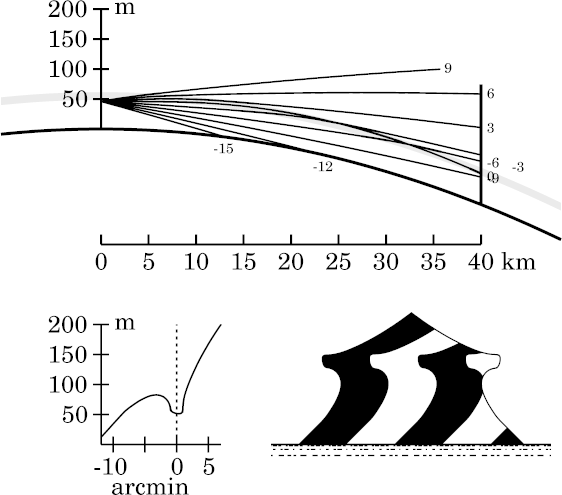
And of course there's the expected smoothing of the corners here as well.
(For simulations at different distances from the observer at this height,
see
here.)
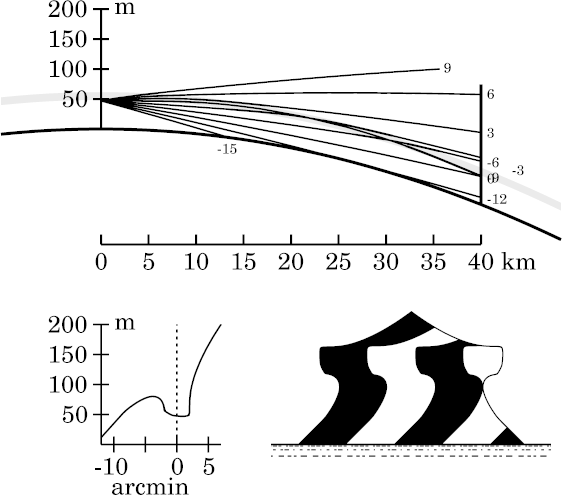
Even so, Wegener's blank (or miraging) strip is appreciably narrower here, in the smoothed model, than in the unsmoothed, zigzag model. The difference is particularly obvious at its upper edge: more of the middle dark stripe on the target is visible just above the upper edge of the strip (above the right-hand white stripe) here than in the zigzag case. This difference will continue to be visible at greater eye heights.
The rounding of the corners is quite obvious, particularly at the lower
edge of the blank strip.
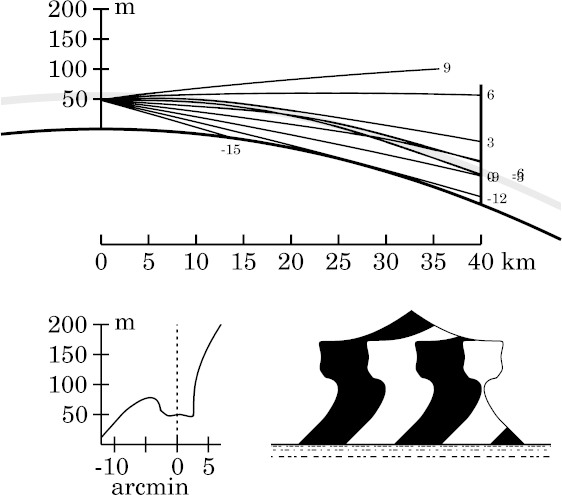
Smoothing the inversion also has made the upper edge of the strip less
sharply defined, so there's now more slope to the nearly-vertical part of
the transfer curve near +2′ altitude.
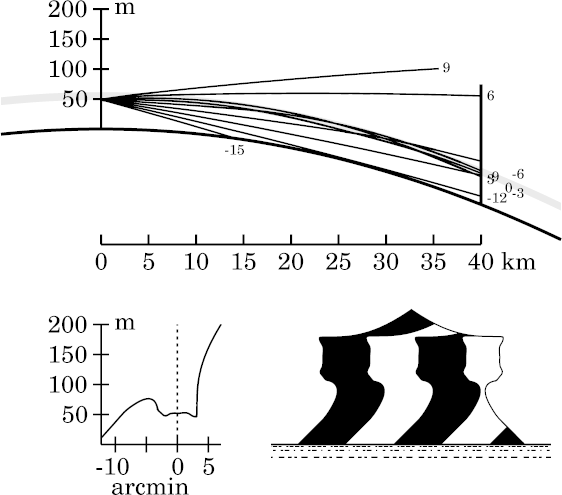
The smoothing has also subtly modified the effects of Wegener's
periodicity effect
on the ducted rays near the astronomical horizon.
These rays now appear to fill the duct more uniformly than in the zigzag
case.

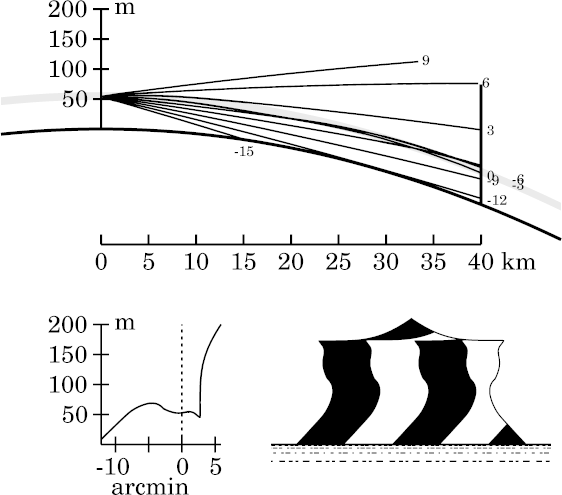
A set of simulations at this height (54 m) for this model
at different distances from the observer is shown
here.
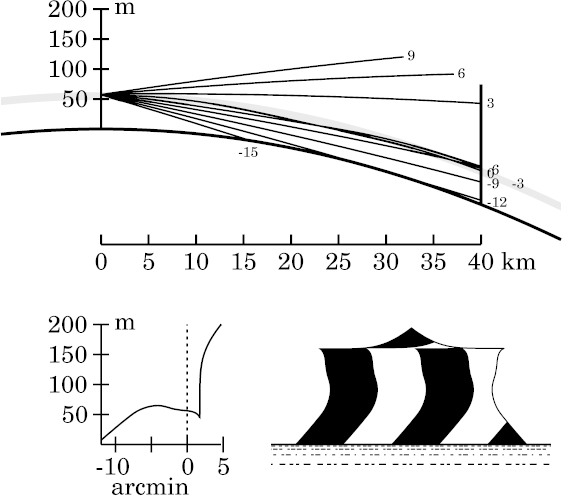
Paradoxically, smoothing the inversion has made the upper edge of
the miraged image more acute.

If you jump back and forth between the two images, you can see that the sharp edge here is essentially produced by a narrow zone of strong image compression (stooping) at the top of the strip: compare the transfer curves, just above the astronomical horizon.
You can see simulations for greater ranges, and the effects of range alone at fixed heights, on the distance-effects page for this model.
Copyright © 2008 – 2009, 2012, 2025 Andrew T. Young
or the
introduction to all mirage simulations
or the
main mirage page
or the
GF home page
or the website overview page